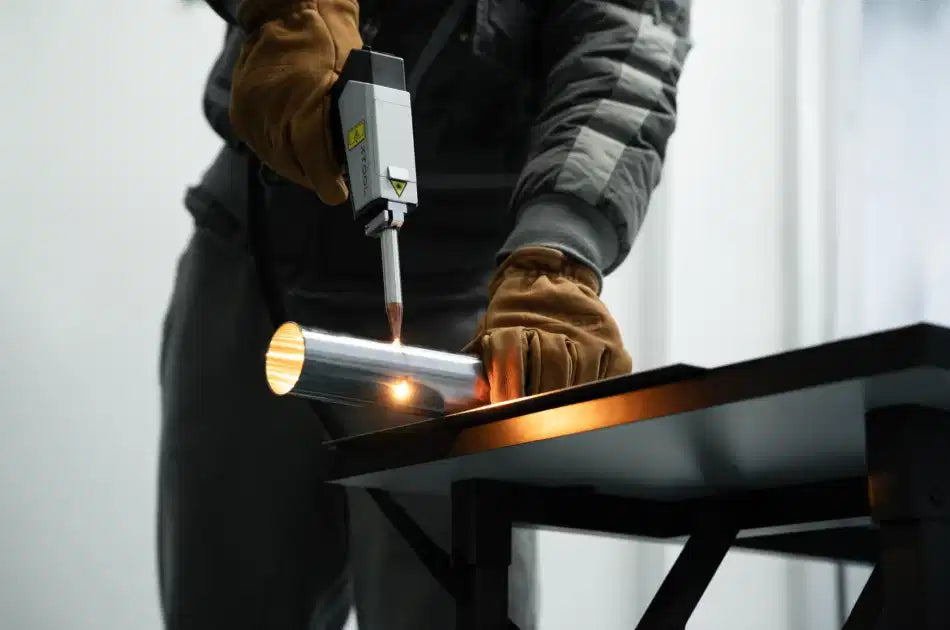Figuring out the right price for your handmade items is somewhat tricky, but it's an integral part of starting and running a craft business. If your handmade items are priced too low, you might be shooting yourself in the foot and will likely leave money on the table. On the flip side, pricing your handmade items too high is a sure way to make a quick exit from the market.
To start and run a profitable craft business, you need to avoid any of these situations. In this guide, you will discover how to price in a way that covers all your production costs and also help you generate profit in the long term.

In This Article
- Understanding Costs
- Understanding the Markup
- Perform a Market Research
- Balancing Profit Margins and Appeal
- Example Pricing Formula Breakdown
- Adjusting Prices Over Time
Understanding Costs
To get the right price for your handmade items, you need to take all costs and expenses into consideration. Having a good understanding of your cost will help you fix the right price that guarantees profit.
As a general rule, you need to take the following costs into consideration:
- Base manufacturing cost
- Labor costs
- Overheads
- Seller fees
- Shipping costs
Here's an in-depth explanation of the various costs that have to be put into consideration.
Base Manufacturing Costs
The base manufacturing costs (or base production cost) is a vital piece to be considered when determining the price of your handmade item. As a crafter who runs a craft business, you need to know how much it costs you to make each item. This will help you figure out the minimum possible price you can place on the item. Placing the right price on your handmade item will lower your risk of making a loss in the long run.
The base manufacturing cost could include the cost of things like raw materials, the cost of product supplies, and the cost of the overall packaging of your product.
Labor Costs
As a crafter, it's easy to ignore the effort and time you used in the creation of your handmade items. Most crafters seem to completely ignore (or undervalue) the time they invested into the business.
Getting the right price for your handmade item involves factoring in your wages. And that's aside from the business profit. Your wage can be integrated into your overall business profit, or you can factor it in as a separate amount.
But what should your labor cost be? Well, you can calculate your labor cost using the formula below:
Hourly Rate x Manufacture Time.
Overheads
If you're a newbie, you're probably wondering what overheads are. Overheads are business expenses that do not directly relate to the production of handmade items. Popular overheads are rent, electricity, machine maintenance, software subscriptions, or phone and internet charges. All these are not directly connected to the handmade items you're producing. Therefore, they're considered as the business "overhead" cost.
Overheads are also known as indirect costs. After all, these costs are indirectly related to the production and manufacturing activities. If the overheads are not factored in, then you'll probably not make enough profit during your business sales. And an unprofitable business will cease to exist in no time.
There are fixed and variable overhead costs. Fixed overhead costs are recurrent expenses that have to be met every month. These overhead costs almost always remain the same month after month — the expenses are independent of the total number of items you sell. A typical example of fixed overhead cost is the rent.
Variable overhead costs are expenses that change month after month. And the amount you spend is dependent on the number of handmade items you sell. A good example of variable overhead cost is the cost of packaging materials. The more handmade items you sell, the more you will spend on packaging these items.
Seller Commission Fees
If you opt to sell your handmade items on any of the online craft marketplaces, you will have to factor in the commission (or processing fees). By now, you probably know that online craft marketplaces come with platform charges. And you'll have to pay these charges if you want to remain on these platforms.
Commission fees are not the same across the various platforms. You need to take a close look at the commission fee that is applicable in your preferred online craft marketplace(s).
Crafters who receive payments through payment processors like PayPal should consider the payment processing fees.
Shipping Costs
You need to consider the cost of shipping and packaging your product. To get an accurate measure of the shipping cost, you have to take a look at the cost of packaging materials like labels, bags, or boxes. The postage costs have to be also considered.
If you're using accounting software for your calculation, create a "shipping cost profile" for these calculations. The "shipping cost profile" should be created for all kinds of handmade items you're selling — and the cost for shipping these items should be properly documented. This way, it becomes easy to price the product accordingly — and the associated shipping cost will be factored in during the product pricing.
Understanding the Markup
Markup is typically the amount added to the cost price. The markup plus the cost price makes up the selling price — and that's what will be charged to the customer. Putting your markup into consideration is a sure way to get a better financial reward for all the hard work you put into the creation of the handmade item.
Markup is usually expressed as a percentage. That is, a 100% markup translates to the cost price times two.
Your production cost shouldn't be over the rooftop. You can lower it by using quality equipment like laser engraving and cutting machines.
Here's a quick breakdown of how using the right laser engraving and cutting machines will help you improve efficiency and reduce costs.
Minimal Waste
With laser cutting machines, you will have a precise production process. This will, in turn, reduce material waste. Reduction in material waste translates to cost reduction especially when using expensive materials like leather and metal during your production process.
Less Need for Finishing
Laser cutting and engraving machines create finished, clean edges — lowering the need for extra finishing processes. Less need for finishing helps save labor costs and time.
Diverse Applications
Laser cutting and engraving machines can handle various materials and be used for various applications. All these eliminate the need for acquiring dedicated machines or tools — and it counts for the reduction in the cost of equipment.

Fast Processing Speed
Unlike traditional cutting tools, laser cutting and engraving machines are relatively fast — and that helps crafters produce more handmade items in less time.
Automation
Laser cutting machines are software-controlled. This will help you lower the need for manual labor, and free up the crafter to focus on other business-related tasks.
Lowers Error Rate
Laser machines offer high accuracy and precision — and that lowers the error rate, and also reduces the need for reworking on your crafts.
Design Flexibility
Laser cutting and engraving machines accommodate detailed and intricate designs. This boosts the creative freedom and versatility that goes into the production of handmade items with complex designs.
Perform a Market Research
There's no one-size-fix-all rule when it comes to pricing your handmade items. The pricing formula gives you a clue of what the price range of your handmade items should be. After figuring out what the price range should be, the next step is to compare the prices with market prices of handmade items similar to what you're producing.
A thorough market research is needed to get a good grasp of how other similar products are priced in the market. After that, you can come up with what your product prices should be. It's good to emphasize that product prices change every time — and you need to keep tweaking until you get your desired price mark for your product.
During your market research, you need to have the following things in mind:
- What other craft vendors are charging for handmade items that are similar to yours
- Are the handmade items of a much better (or lower) quality than yours?
- Are your handmade items different and unique from what's found in the market?
If your handmade items are better in quality than what's found in the market, then commanding a higher price seems okay. And if you have a much more superior handmade item, then you're better off charging a premium for your products.
Balancing Profit Margins and Appeal
You also need to pay close attention to your target audience. Are they willing to pay for your handmade items? Your pricing should align with their perceived value, and what they can afford. To boost your chances of generating sales, you should offer bundle packages, and discounts, and probably come up with loyalty programs to encourage repeat purchases from customers.
Furthermore, you need to showcase the benefits of using your handmade items. What makes your crafts different from other handmade items in the market? Communicate these benefits to your customers.
Example Pricing Formula Breakdown
Now you've got a good understanding of cost, an example will help you appreciate how cost helps in determining the selling price of handmade items.
Let's say you make jewelry to sell, and you're looking at how to price your products. For the purpose of this illustration, the production materials cost $10, and it takes roughly 2 hours to make jewelry. The hourly rate is $30, and the overhead cost is about 10% of the base manufacturing costs.
As a businessperson, you may decide to markup by 150% since you're a retailer.
From your research, you figured out that the shipping cost will be about $4 to ship jewelry within the United States. And if you're selling in online craft marketplaces like Etsy, you will have to pay seller fees of about $3.60.
Putting all these into consideration, here's how to price your handmade item:
Base Manufacturing Cost = (cost of materials) $10 + (manufacturing time) $60
The manufacturing time is obtained by multiplying the hourly rate ($30) by the total number of hours needed for the production process (2 hours). That is, $30 x 2 = $60.
It's worth noting that the overhead is 10% of the base manufacturing cost. That is, 10% x $70 = $7.
Manufacturing Cost (with Markup Applied) = (Base Manufacturing Cost x 1.5) = $105.
Retail price = (manufacturing cost with markup) $105 + (overheads) $7 + (shipping) $4 + (seller fees) $3.60 = $119.60.
This is how a handmade item is priced! You need to consider all the business costs accrued during the course of production. Using this pricing model, you're sure to make a good profit on each product sale.
Adjusting Prices Over Time
Prices are not fixed — they change over time. And you should be comfortable adjusting your prices to fit the current market prices. If you assume that your slow sales are due to your high product prices, you could try adjusting the prices to see if your product sales increase. Regardless of how slow your sales are, never go below the base production cost. If not, you'll be making some losses in your craft business.
If your prices are somewhat lower than that of your competitor, you should try increasing the prices. Most times, customers tend to view high-priced handmade items as high-quality items. And if your products are viewed as high-quality products, customers will be more willing to pay for them.
Running a craft business involves making the necessary adjustments as your business grows. Adjusting your prices could be due to reasons like:
- Increase in the material and overhead costs. When there's an increase in production costs, you will need to increase your handmade prices to cover the extra expenses.
- When you're not generating as much profit as you anticipated. A decrease in your product prices will help you record an increase in sales.
Regardless of what your reasons are, it's alright to adjust your product prices to reflect the realities in the marketplace. While adjusting your prices, you need to adjust them in such a way as to encourage your customers to make repeat purchases.
Conclusion
Pricing handmade items is somewhat tricky. But if you want to run a profitable craft business, you'll have to get your pricing right! You need to take time to figure out all the variables associated with your production costs. You also need to have a good grasp of the target audience — and come up with a pricing model that works for both you and your customers. If you settle for the right pricing model that works for your business, you'll be smiling to the bank every time you make a sale!
Aside from your product pricing, you need to focus on producing quality handmade items. After all, a good product sells itself. The pricing, product quality, and packaging have to be in place. You also need to reach out to customers who are willing to pay for the quality of handmade items you're producing. If all these pieces are in place, generating sales and making lots of profit on each handmade item won't be an issue.
Now you know how to price handmade items, what price range will you be selling your handmade items?




